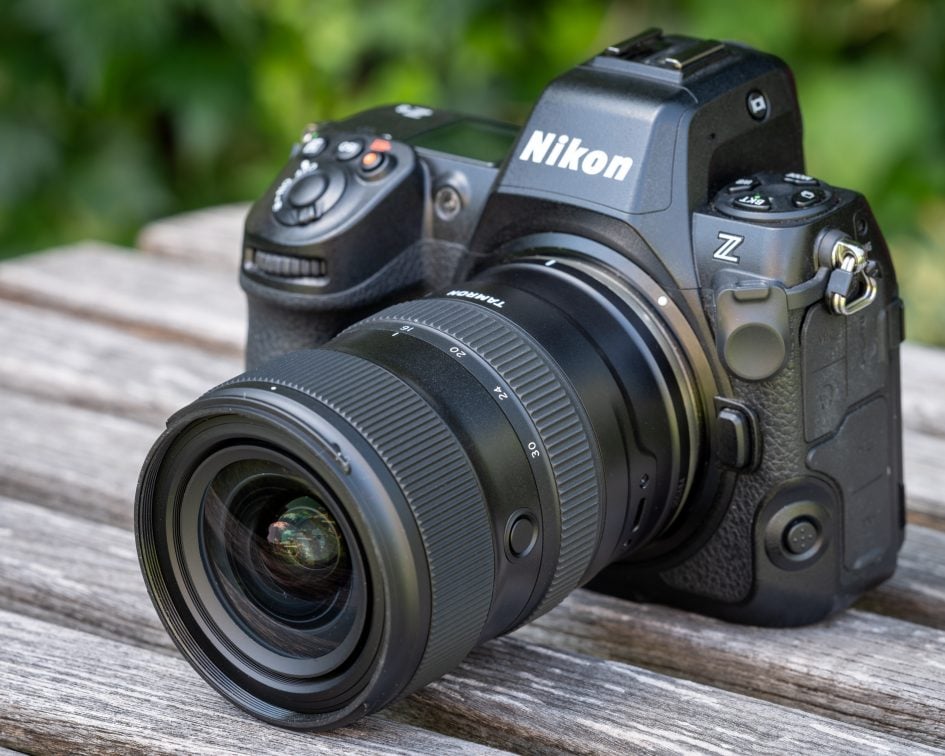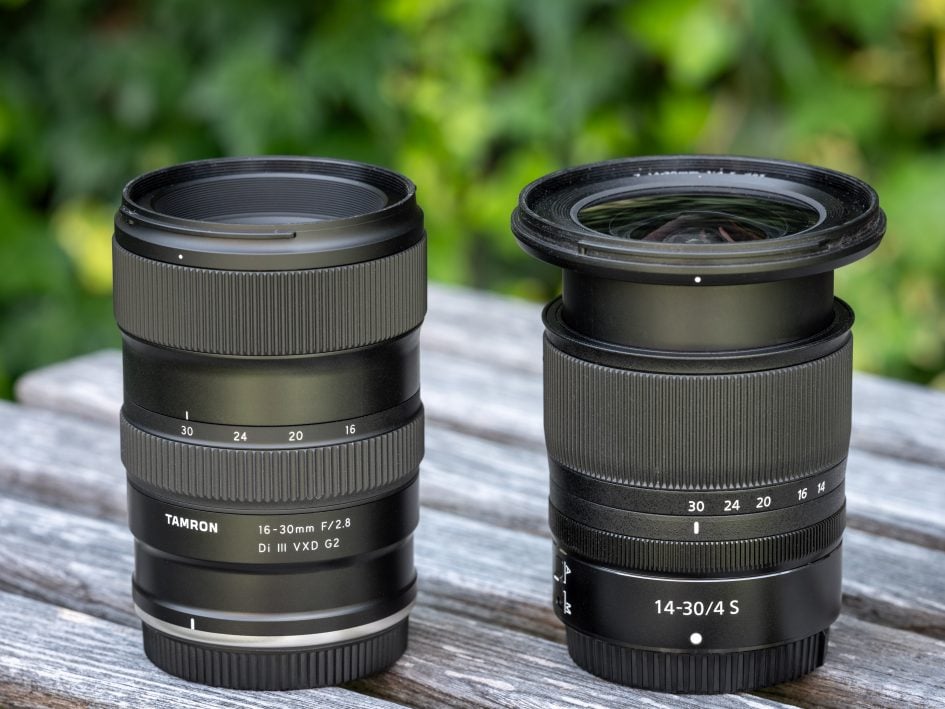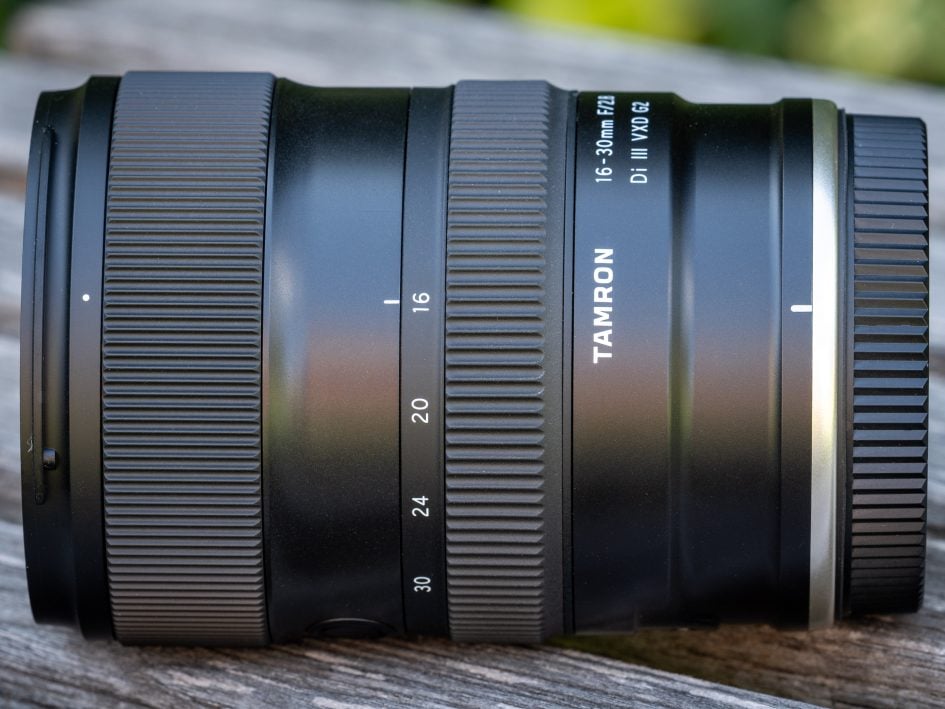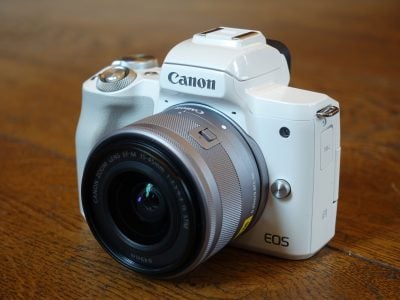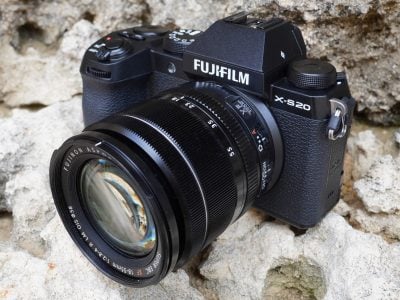Tamron 16-30mm f2.8 Di III G2 review
-
-
Written by Thomas
Intro
In 2019 Tamron introduced the 17-28mm f2.8 Di III RXD (model A046S) as member of their trio of f2.8 zoom lenses designed specifically for Sony’s full-frame mirrorless E-mount bodies. I tested the lens on a Sony A7R II and it rightfully earned a recommendation in my Tamron 17-28mm f2.8 Di III review. In 2022 Nikon decided to use Tamron’s optical formula and bring the Nikon Z 17-28mm 2.8 on the market. Now Tamron updated the optical formula of the lens, improved the zoom-range from 1.65x to 1.88x, changed the type of focus drive, and added a focus set button plus USB-C port to make the lens configurable via computer and Tamron’s Lens Utility (“TLU”). The new Tamron 16-30mm f2.8 Di III VXD G2 is available for Sony E-mount and Nikon Z-mount (model A064S/A064Z).
The lens is made in Vietnam. At 959 EUR / 929 USD / 849 GBP it is a bit cheaper than Nikon’s Z 14-30mm f4 S and Z 17-28mm 2.8 or Sony’s FE 16-25mm f2.8 G, which makes it roughly half as expensive as the Nikon Z 14-24mm f2.8 S or Sony’s FE 16-35mm f2.8 GM II. So if Tamron also manages to improve optical performance their 16-30mm f2.8 Di III G2 would certainly become a very attractive alternative to Nikon’s and Sony’s professional wide-angle zoom lenses. To find out I tested the Tamron G2 on a Nikon Z8 and had a very close look at its optical qualities – using pixel shift shooting which quadruples the resolution of the camera to 180MP.
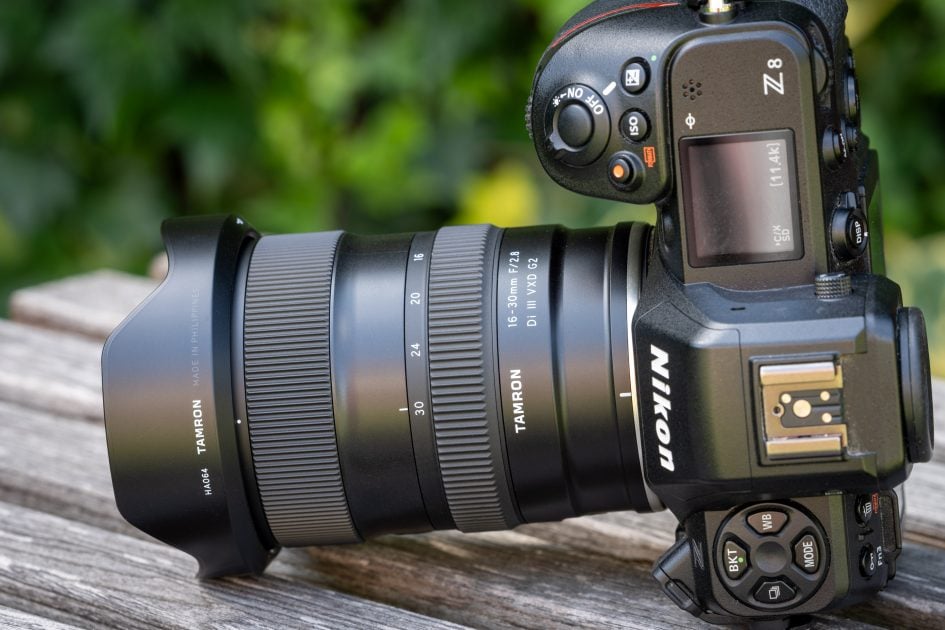
Facts and features
Let’s compare the Tamron 16-30mm f2.8 Di III G2 for Z-mount (“Tamron G2” for short) to the Tamron 17-28mm f2.8 Di III (“Tamron G1”), the Nikon Z 14-30mm f4 S (“Z 14-30”), Z 14-24mm f2.8 S (“Z 14-24”), and the Sony FE 16-35mm f2.8 GM II (“FE 16-35”). As usual I’ve rated the features with a [+] (or [++]), when it’s better than average or even state of the art, a [0] if it’s standard or just average, and [-] if there’s a disadvantage.
Size (diameter x length): at 75 x 104mm (3.0 x 4.1in.) plus 23mm for the lens hood (87mm diameter) the Tamron G2 is only a bit larger than the Tamron G1 at 73 x 99mm + 25mm lens hood. The Z 14-30 is 89 x 101mm + 25mm lens hood, the Z 14-24 measures 89 x 125mm + 18mm lens hood, the FE 16-35 is 88 x 112mm. The Z 14-30 and FE 16-35 also extend a bit during zooming. [+]
Weight: at 448g (1.0 lb.) plus 23g for the lens hood the Tamron G2 is around 30g heavier than the Tamron G1 but is still lighter than the Z 14-30 at 479g + 18g lens hood. The Z 14-24 is 649g + 35g lens hood, the FE 16-35 is 547g. [+]
Optics: The Tamron G2 has 16 elements in 12 groups including 3 special dispersion elements and 4 aspherical elements which makes the design a bit mor komplex than its predecessor. But the other lenses in this comparison are of a similarly complex construction. All lenses (except for the Tamron G1) have fluorine coating at the front lens to repel water, dust, and dirt and make cleaning easier. [+]
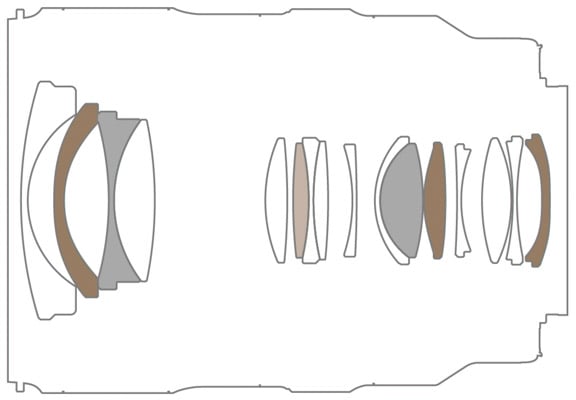
Minimum object distance is 0.18m (0.9ft.) with a magnification of 1:4.3 and an extremely short working distance of 6cm (2.4in.) at 16mm focal length. At 30mm focal length maximum magnification is 1:5.6 which is still quite good and results in a better working distance of around 15cm (5.9in.). At 30mm focal length a magnification of 1:10 is achieved at 0.4m distance. The other lenses in this comparison achieve similar MODs and magnifications except for the FE 16-35 which can achieve a maximum magnification of 1:3.1. [+]
Filter-thread: Both the Tamron G2 and G1 take 67mm filters. The Z 14-30 and FE 16-35 use 82mm filters while the Z 14-24 needs huge and expensive 112mm filters at the front but can use gel filters at the rear. [+]
Image stabilization: None of the lenses in this comparison has optical image stabilization. But the full-frame Nikon Z and Sony Alpha camera bodies have sensor-based image stabilization built in. [0]
Autofocus: All lenses in this comparison offer autofocus with built-in focus drive. Manual-focus override is by simply turning the dedicated focus ring. The action of the focus ring on the Tamron can be switched from the camera or Tamron’s lens utility between the usual variable gearing or linear gearing and the direction of the ring can be reversed. That’s the same as with the Z-Nikkors. [+]
All lenses in this comparison cover full frame sensors or can equally be used on a cropped sensor (DX/APS-C). The angle of view of the Tamron G2 is equivalent to a 24-45mm zoom lens on a cropped sensor. [+]
Price: The Tamron 16-30mm f2.8 Di III G2 for Z-mount comes at a recommended retail price of 959 EUR (incl. 19% VAT) / 929 USD / 849 GBP while the Tamron G1 (Sony E-mount only) currently sells for 705 EUR / 800 USD / 680 GBP. The Nikon Z 14-30mm f4 S is around 1290 EUR / 1200 USD / 1255 GBP, the Z 14-24mm f2.8 S at 2370 EUR / 2050 USD / 2360 GBP, and the Sony FE 16-35mm f2.8 GM II costs 2500 EUR / 2500 USD / 2300 GBP. [+]
The Tamron lenses come without a pouch but the reversible lens hood is included. The Z-Nikkors come with a lens hood and a flimsy pouch while the FE 16-35 has a better pouch plus strap. Only the lens hood of the Z 14-24 and FE 16-35 have a lock to prevent it from accidentally falling off. [0]
Aperture ring and other control elements: Of the lenses in this comparison only the FE 16-35 has a dedicated aperture ring. But you can assign the focus set button on the Tamron G2 to switch the focus ring to operate the aperture. You can also assign other functions to the focus set button apart from the usual focus preset e. g. make the focus automatically shift between two focus positions A and B or assign a function from the camera body. Some of these functions can be set from the camera but for others like the nifty Astro Focus Lock which sets the lens to infinity you need Tamron’s Lens Utility (TLU) and connect the lens to a computer or smartphone via USB-C cable. This is also the way to update the firmware of the lens. On the Z-Nikkors the multi-function control ring can be assigned to operate the aperture, exposure compensation, ISO sensitivity, or focus (on the Z 14-30; the Z 14-24 has a dedicated focus ring) – or simply switched off. The Z 14-24 has one function button, the FE 16-35 has two which normally operate as a focus lock button but can be assigned other functions from the camera. [+]
Sealing: All lenses in this comparison have a rubber grommet at the lens-mount plus further special weather-sealing throughout the construction. [+]
At a score of 0[-]/2[0]/10[+] the Tamron 16-30mm f2.8 Di III G2 is a well featured design with its major advantages being small and light, and coming at a very reasonable price. And Tamron did not skimp on features like thorough weather sealing, focus set button, and customization via USB port. Plus it can reach magnifications of 1:4.3 – albeit at a very short working distance. The only really critical point may be that the zoom starts at 16mm which gives a 7 degrees narrower angle of view than lenses starting at 14mm.
Two ultra-wide zoom lenses
Above: Tamron 16-30mm f2.8 Di III G2 (left), Nikon Z 14-30mm f4 S (right)
Coverage
With its 1.88x zoom-range the Tamron starts at the short end with an angle of view of 107 degrees, compared to the 114 degrees of zooms starting at 14mm.
Here is the angle of view that the Tamron 16-30mm f2.8 Di III G2 covers compared to the Nikon Z 14-30mm f2.8 S (Distortion control set to On):
Above: Tamron 16-30mm f2.8 Di III G2 coverage on a full-frame camera at 16mm (left) and 30mm (right); click image for 4k version
Above: Nikon Z 16-30mm f4 S coverage on a full-frame camera at 14mm (left) and 30mm (right); click image for 4k version
The difference between a zoom lens starting at 16mm versus a lens starting at 14mm is visible but doesn’t look like much. But still: Not always can you step back enough to get the 7 degrees wider view of 14mm focal length.
A close look at the long end (30mm focal length) reveals that the Tamron achieves a slightly (<1%) larger magnification than the Nikon. I didn’t test the Sony FE 16-35mm f2.8 GM II but it should give a 17% larger magnification at 35mm focal length. To achieve the same angle of view you’d need to crop a 42MP image shot at 30mm down to 31MP – which might not be a problem at all for the intended purpose.
Focus and zoom
Focus accuracy and repeatability is critical to consistently produce sharp shots. Repeatability (the accuracy of focus on the same subject after repeated focus-acquisition) of the Tamron 16-30mm f2.8 Di III G2 is not so good: Reikan FoCal measured only 96% consistency influenced by two clear outliers over a series of 40 shots on the well lit and contrasty focus test target. For comparison: Both the Nikon Z 14-24mm f2.8 S and Z 14-30mm f4 S achieved 98-99% consistency with no outliers under the exact same test conditions. Fortunately the outliers of the Tamron 16-30mm f2.8 Di III G2 were so obviously out-of-focus that you could immediately recognize them in the viewfinder. That’s much better than near-misses where you think focus is perfect only to find out later that it was not. Without the outliers focus consistency of the Tamron was 98-99%. On a Z8 and at 30mm focal length the lens focuses extremely fast at around 0.12 sec from infinity to 0.4m (1:10 magnification) which is comparable to the Nikon Z 14-30mm f4 S. The Nikon Z 14-24mm f2.8 is clearly slower.
The zoom ring has a pretty short throw of about 65 degrees and turns the way Nikon/Sony users are used to. It has a 13mm wide rubber surface with a good grip, turns so smoothly it can be operated with one finger, and shows no zoom creep. The focus ring is 20mm wide and is located at the front. It also has a rubberized surface, moves smoothly, and can easily be operated even with your pinky.
In photo mode AF-operation is almost inaudible from the outside. If you record video with the built-in microphone the AF-drive and operation of the zoom ring is quiet. When the lens is powered down the focus group inside the lens slides back and forth freely as the focus drive is not engaged. That makes a low thunking sound and you can feel the focus group moving around.
As you pull focus, you’ll notice very little focus breathing: The image became 0.7% more magnified when I adjusted focus from infinity to 0.4m at 30mm focal length. The same test at 16mm focal length produced a 0.4% increase in magnification.
I also tested whether Tamron’s zoom lens allows you to change the focal length without altering its focus. This characteristic is called parfocal. I focused the lens at 30mm and then slowly zoomed back checking focus on the way. The 16-30mm f2.8 Di III G2 kept its focus perfectly over the complete zoom-range.
Next check out my quality results!
Check prices on the Tamron 16-30mm f2.8 Di III G2 at B&H, Adorama, WEX UK or Calumet.de. Buy used gear from MPB. Sell your used gear to MPB. Alternatively get yourself a copy of my In Camera book, an official Cameralabs T-shirt or mug, or treat me to a coffee! Thanks!
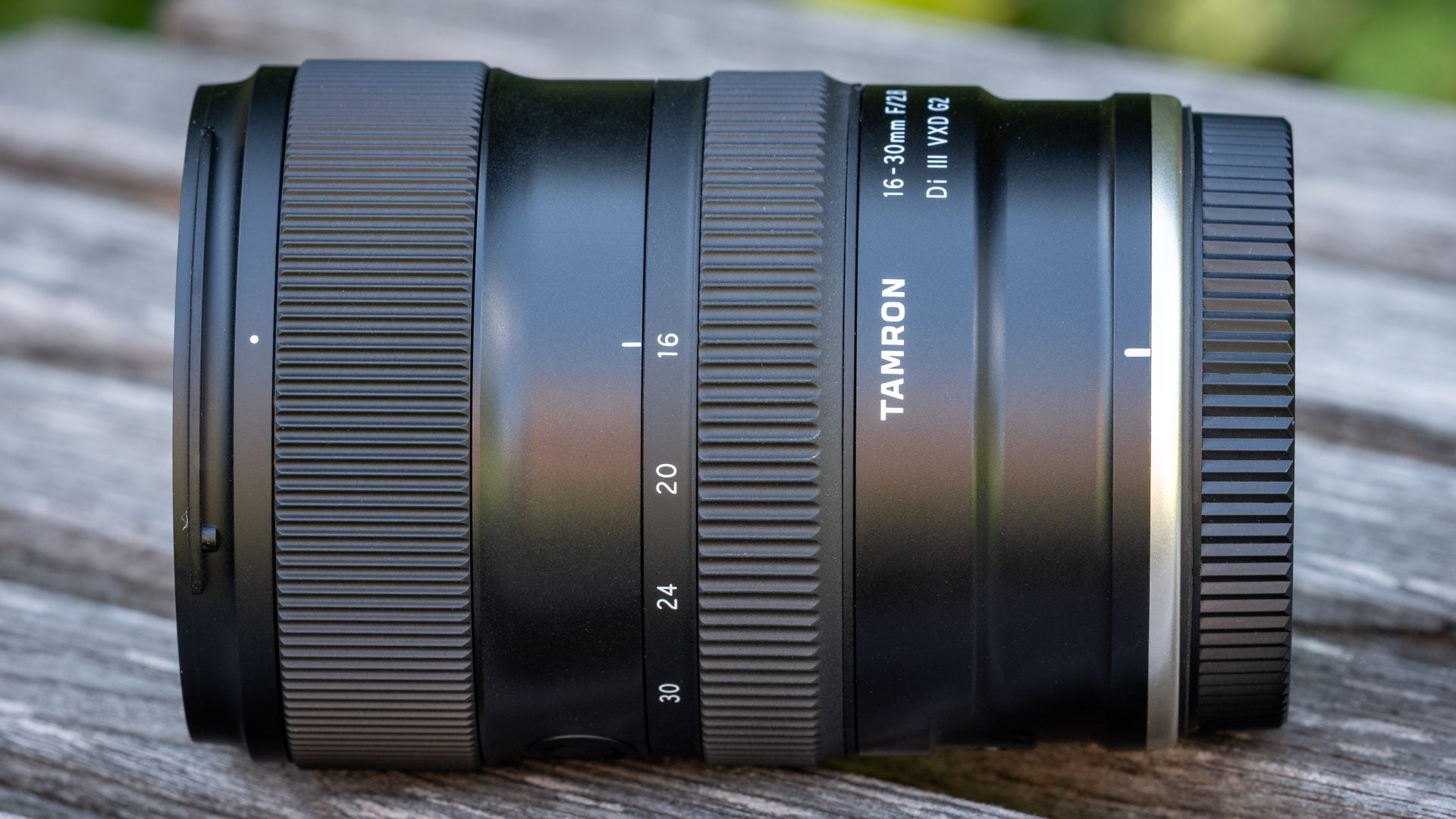
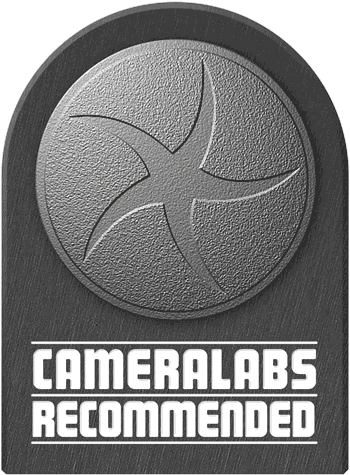 Tamron equipped their new 16-30mm f2.8 Di III G2 with an improved zoom-range, made the focus drive very fast, and added a focus set button plus USB-C port. Its sharpness is good to very good across the full-frame sensor between 16mm and 24mm and it also shows practically no loCA, focus shift, or coma, and has very good resistance against flare, (veiling) glare, and ghosting. Close-up performance is usable – if you can live with the very short working distance, and the lens shows very little focus breathing plus keeps its focus perfectly while zooming. It also comes in a small and light body with Sony E-mount or Nikon Z-mount, has full weather sealing, and a very reasonable price. But the Tamron 16-30mm f2.8 Di III G2 is less sharp than its predecessor (and other lenses) in the APS-C/DX image circle and becomes especially soft at 30mm f2.8. And Bokeh (although otherwise pretty good for an ultra-wide angle zoom) can produce double-contours in the foreground and doughnut-shaped highlights in the background at 30mm f2.8. Still I can recommend the lens based on its overall feature set and price/performance ratio.
Tamron equipped their new 16-30mm f2.8 Di III G2 with an improved zoom-range, made the focus drive very fast, and added a focus set button plus USB-C port. Its sharpness is good to very good across the full-frame sensor between 16mm and 24mm and it also shows practically no loCA, focus shift, or coma, and has very good resistance against flare, (veiling) glare, and ghosting. Close-up performance is usable – if you can live with the very short working distance, and the lens shows very little focus breathing plus keeps its focus perfectly while zooming. It also comes in a small and light body with Sony E-mount or Nikon Z-mount, has full weather sealing, and a very reasonable price. But the Tamron 16-30mm f2.8 Di III G2 is less sharp than its predecessor (and other lenses) in the APS-C/DX image circle and becomes especially soft at 30mm f2.8. And Bokeh (although otherwise pretty good for an ultra-wide angle zoom) can produce double-contours in the foreground and doughnut-shaped highlights in the background at 30mm f2.8. Still I can recommend the lens based on its overall feature set and price/performance ratio.